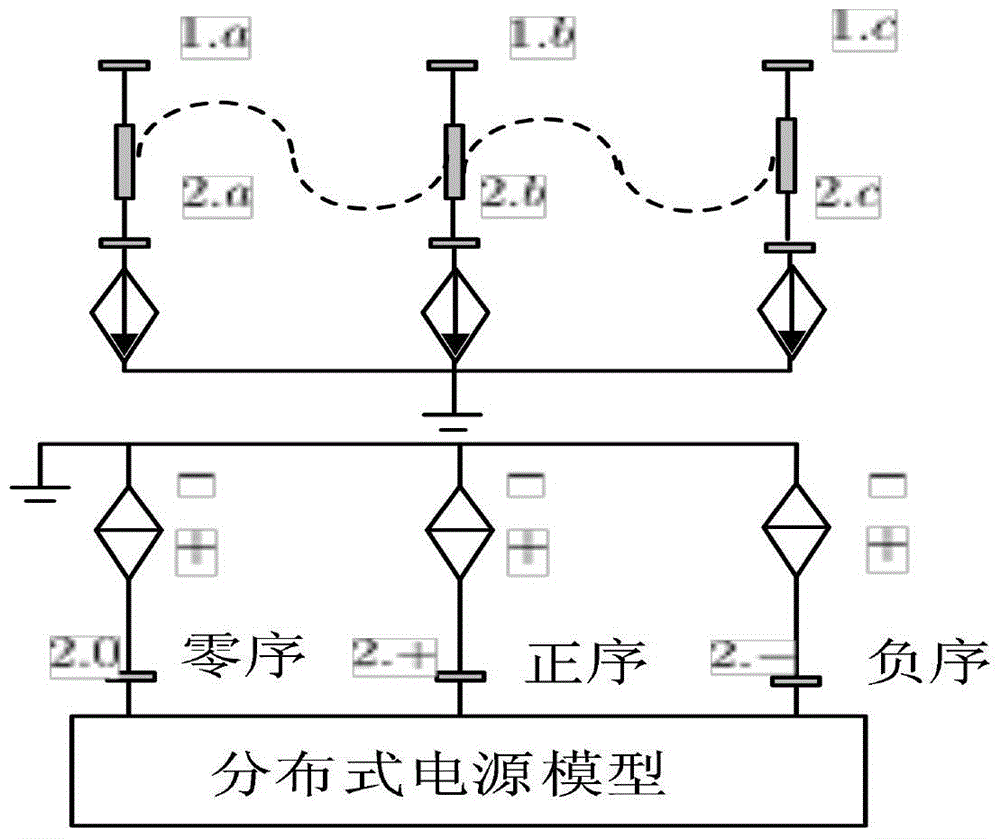Transmission network-distribution network joint fault analysis method based on improved node method
A fault analysis method and transmission network technology, applied to electrical components, circuit devices, AC network circuits, etc., can solve the difficulty of fault calculation of transmission and distribution network data sets, the reduction of sequence network analysis and calculation efficiency, and the failure of transmission network to distribution The influence of network fault current calculation and other issues
- Summary
- Abstract
- Description
- Claims
- Application Information
AI Technical Summary
Problems solved by technology
Method used
Image
Examples
Embodiment 1
[0080] like Figure 5 and Image 6 The transmission-distribution system shown, Figure 5 It is the WSCC-9 node transmission network, in which the connection between nodes 7 and 8 is changed to a DC line, Figure 5 The position 1 under Bus 5 in , is the position connected to the distribution network; Image 6 It is a typical IEEE 13 busbar distribution network with asymmetrical three-phase structure parameters, the power base value is 100MVA, and faults such as grounding or disconnection occur near the distribution node 646.b.
[0081] 1. Input the electrical parameters of transmission equipment such as transmission network, distribution network lines and transformers;
[0082] 2. For transverse faults, that is, short-circuit faults, a constant voltage branch with a voltage of 0 is added to the short-circuit node;
[0083] 3. Let k=0, set initial values for all variables, where k is the iteration count;
[0084] 4. Adopt the improved node method to model, and use the New...
PUM
 Login to View More
Login to View More Abstract
Description
Claims
Application Information
 Login to View More
Login to View More - R&D
- Intellectual Property
- Life Sciences
- Materials
- Tech Scout
- Unparalleled Data Quality
- Higher Quality Content
- 60% Fewer Hallucinations
Browse by: Latest US Patents, China's latest patents, Technical Efficacy Thesaurus, Application Domain, Technology Topic, Popular Technical Reports.
© 2025 PatSnap. All rights reserved.Legal|Privacy policy|Modern Slavery Act Transparency Statement|Sitemap|About US| Contact US: help@patsnap.com



